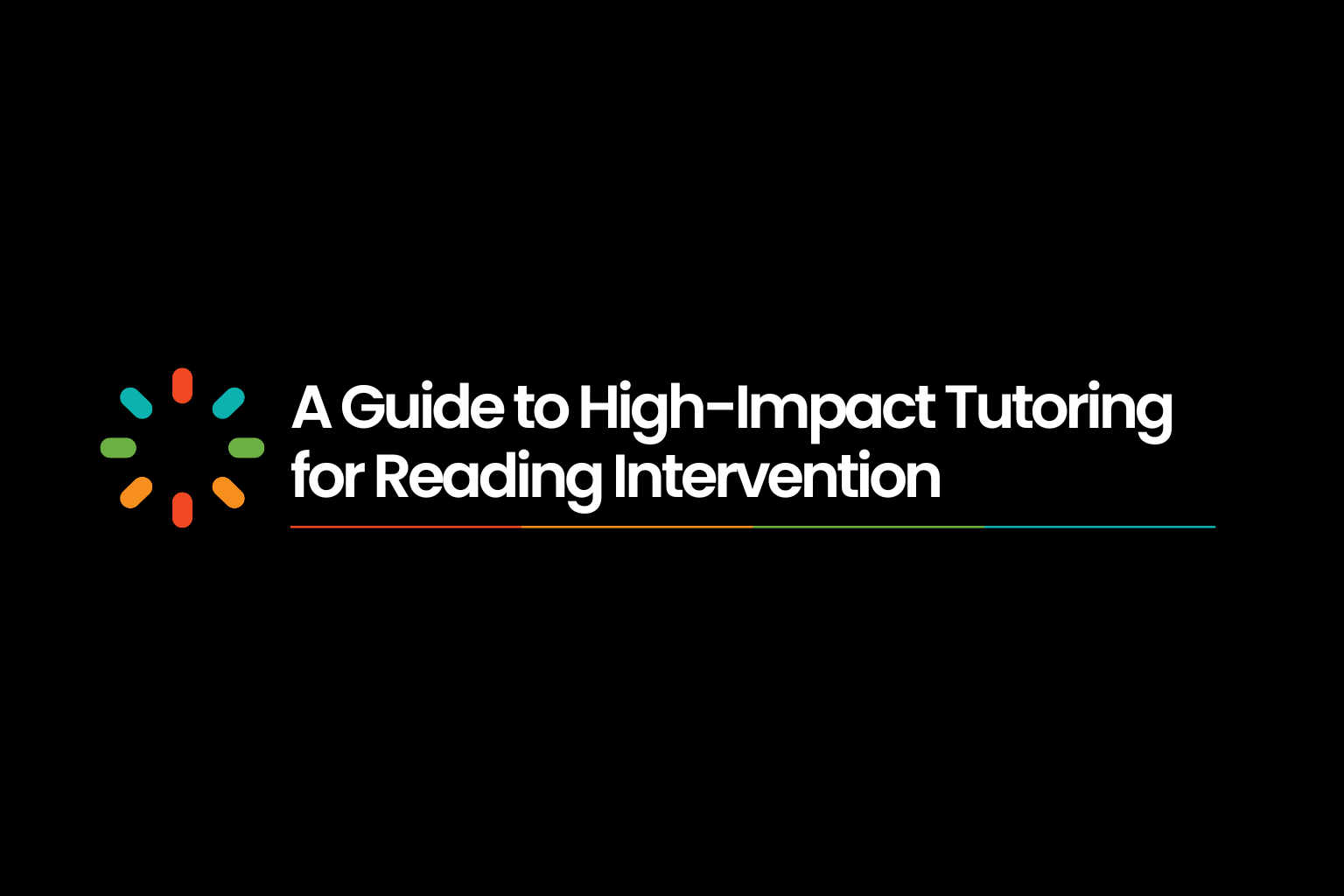While many in-person and online tutoring models are available, high-impact tutoring stands out as the research-backed, effective choice for reading intervention. In a publication on equitable and accelerated approaches to addressing pandemic learning loss, the National Student Support Accelerator (NSSA) at Stanford University recognizes high-impact tutoring as an effective, scalable approach to help students make academic gains in reading.
In an interview for Education Week, Susanna Loeb, the founder and director of the NSSA, said that a high-impact tutoring service “is a great way to kind of engage students in school who are less engaged, because they and their tutor together can see all the success that they’re having academically by working really at that zone of proximal development.”1
Despite changes in funding, school districts understand that there is no responsibility more important than ensuring their students can read well, as this impacts their academic achievement for their time in K-12 and beyond. Tutoring makes reading intervention accessible to all students who need it and has a strong research base for its efficacy, so long as certain components are in place.
Characteristics of Effective High-Impact Tutoring Programs
A well-designed high-impact tutoring program has research-based characteristics that make it particularly effective. These fit into the following categories:
- Dosage. Students should participate in three sessions a week, each lasting at least 30 minutes. The overall length of tutoring intervention should be strategically decided, based on how tutoring students are performing compared to grade-level expectations. Sustained and consistent lessons provide adequate time for the student and tutor to work together, enabling focused work across multiple skill areas. “High-dosage tutoring” models ensure students are given enough intervention time to catch up. This is an important component of high-impact tutoring, but not the only one.
- Student/Teacher Pairing. A student is much more likely to be successful if they have a strong and trusting relationship with a consistent reading tutor. Tutors must have had robust instructional training and receive continuous oversight via coaching to ensure the quality of their teaching. Both in-person and online tutoring are effective, and 1:1 or very small group sessions show the most positive results.
- Progress Monitoring. The tutoring service should collect data to identify which skills each student has mastered and which still need to be taught. The ideal tutoring program tailors instruction to the student, adapting as skills are learned and new learning gaps are identified.
- Setting. Ideally, reading intervention should take place at school and be embedded in the school day. Research shows this helps eliminate barriers to accessing learning at home and encourages attendance at school. However, tutoring in extended learning times (after school) is also beneficial with consistent attendance.
- Aligned Materials. High-quality learning materials that allow students to transfer skills from the tutoring program to the classroom are essential.
The ideal reading intervention is scalable and easily implemented in schools and districts. Research from these design principles published by EdResearch for Action shows that the students who would benefit the most from high-impact tutoring are also the least likely to access it without school intercession, so schools, districts, and tutoring organizations like Hoot Reading must continue to work together to make tutoring an integrated, well-resourced part of a school’s literacy ecosystem.
"Program design and implementation matter. Not all tutoring programs are effective, so educational leaders should turn to research for direction on evidence-based ways to design and implement their programs for maximum effectiveness."2
Success with Hoot Reading's High-Impact Tutoring Program
Hoot Reading has all the characteristics that make a high-impact tutoring service successful:
- 1:1, structured literacy approach
- Three, 30-minute sessions for a minimum of 10 weeks for measurable gains
- Qualified teachers with classroom experience
- Teachers receive comprehensive training on teaching structured literacy online, engaging students, administering assessments, and building lesson plans
- Diagnostic and progress monitoring assessments using proprietary instructional materials in our literacy library
- Flexible at-school and home scheduling
- Top-tier customer service for administrators and families
These allow us to provide equitable, differentiated instruction to thousands of students who need it the most.
Interested in learning more? Find out how Hoot has become a trusted partner for schools and districts that are committed to high-impact tutoring.
1Sparks, Sarah D. “High-Impact Tutoring: Some Research-Based Essentials.” EducationWeek, April 26, 2023. https://www.edweek.org/leadership/high-impact-tutoring-some-research-based-essentials/2023/04
2“Design Principles for Accelerating Student Learning With High-Impact Tutoring.” Student Support Accelerator, June 2024, https://studentsupportaccelerator.org/briefs/accelerating-student-learning-with-high-Impact-tutoring.
